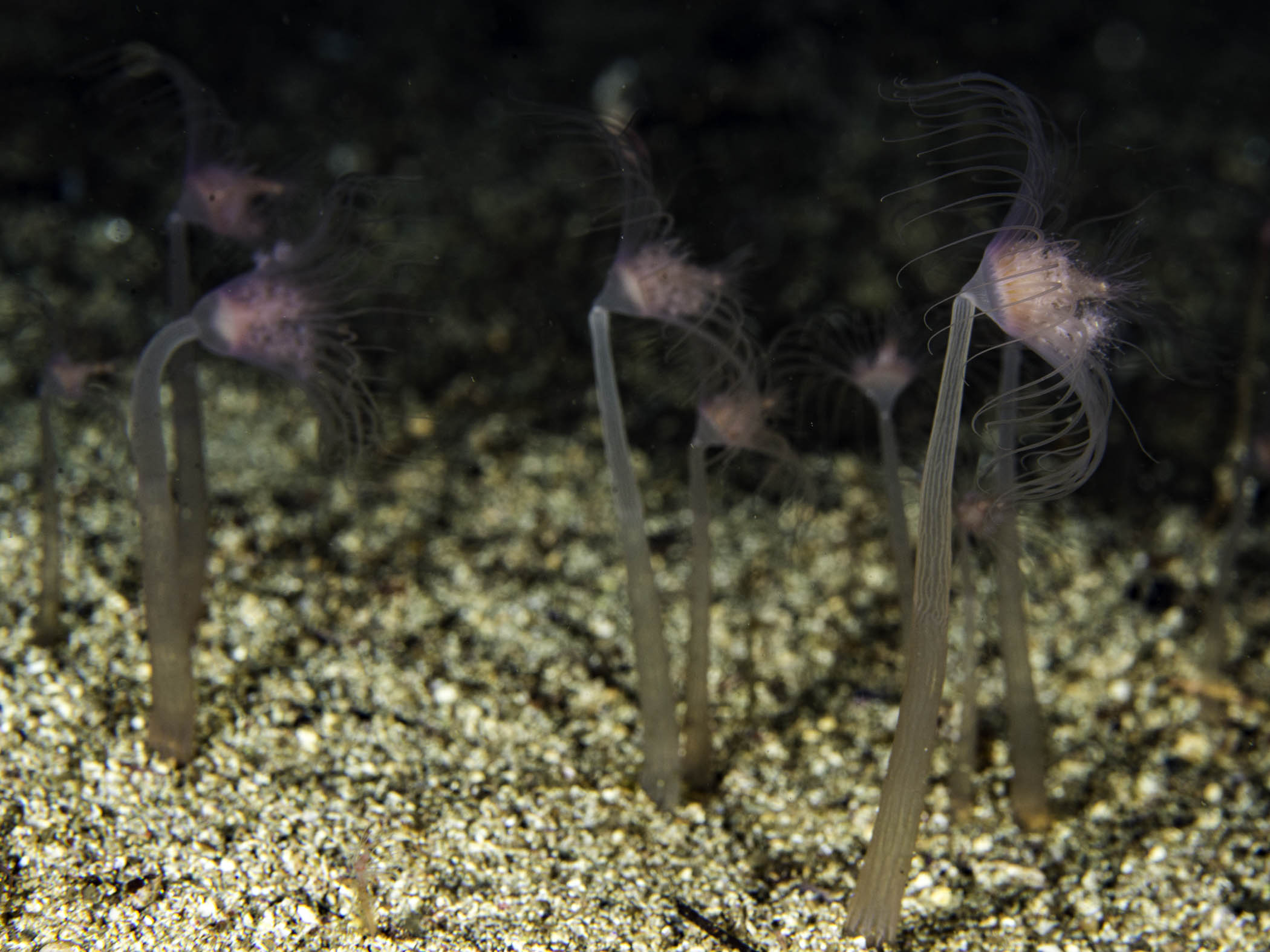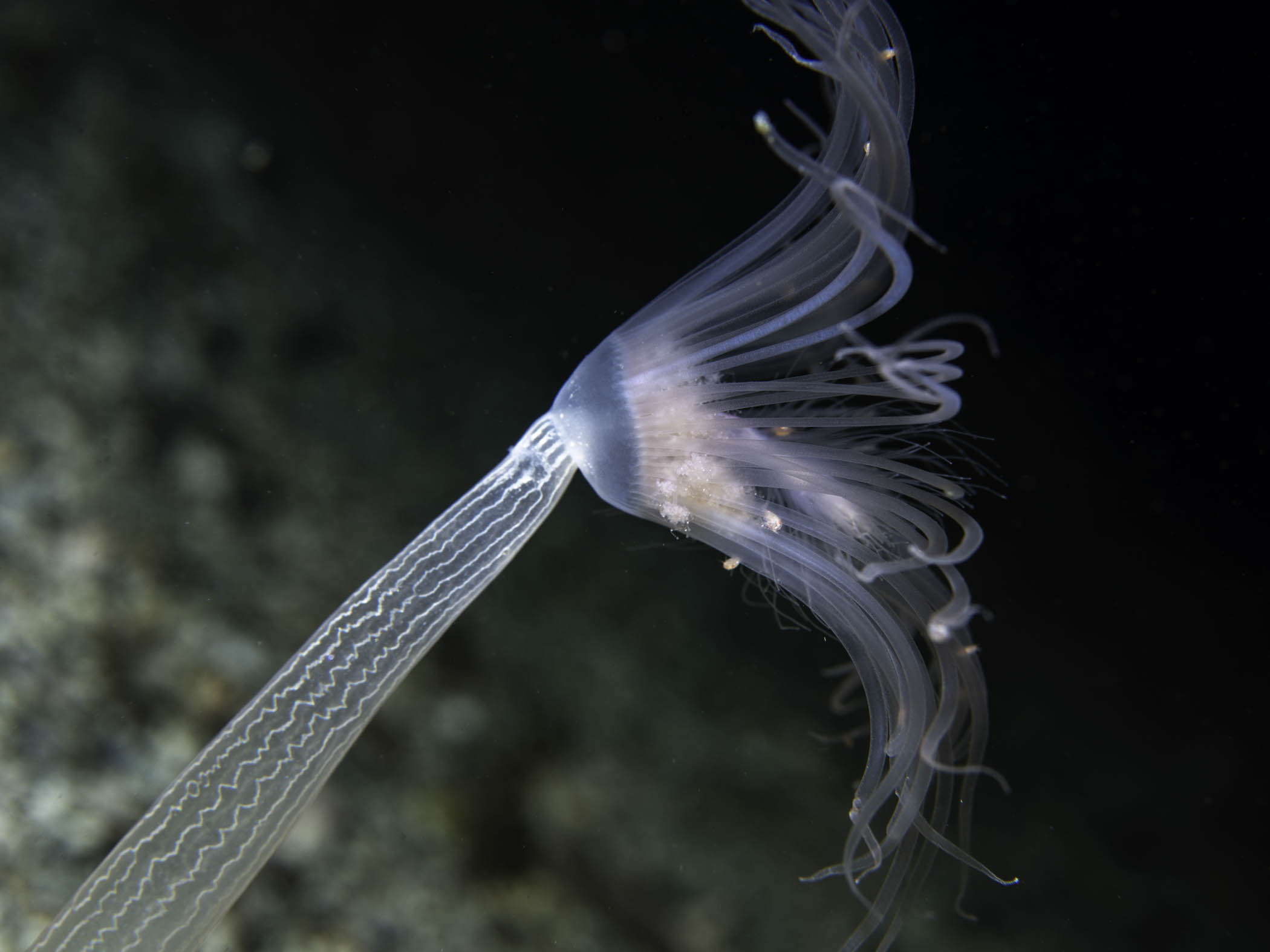| CNIDARIA : Anthoathecata : Corymorphidae | SEA ANEMONES AND HYDROIDS |
Corymorpha nutans M. Sars, 1835
 |
| Corymorpha nutans |
Description: The polyp and stem of this solitary hydroid are usually translucent white or pale pink in colour, and the stem has lines that run longitudinally from the base to where it joins the polyp. The polyp size is relatively large and bends over towards one side, this feature is responsible for the hydroid's name (nutans is Latin for nodding). Typically there are 30 to 40 long, thin tentacles that surround approximately 80 shorter, finer ones. Overall height 80-100 mm, diameter of the polyp and tentacles about 20 mm.
Habitat: This hydroid is usually found in sandy or gravel sediments in depths of 5 m to 25 m. It is rather sporadic in its occurrence and may be common in an area in one year and not another.
Ecology: The rare nudibranch Cumanotus beaumonti feeds on this hydroid.
Distribution: This species is common throughout the British Isles, and extends northwards as far as Norway and south to the Mediterranean Sea.
Similar Species: Unlikely to be confused with any other hydroid from the British Isles.
Key Identification Features:
- A large solitary polyp on a tall stem.
- Longitudinal lines on the stem.
Distribution Map from NBN: Corymorpha nutans at National Biodiversity Network mapping facility, data for UK.
iNaturalist: Corymorpha nutans at iNaturalist World Species Observations database.
GBIF data for Corymorpha nutans
WoRMS: Corymorpha nutans at World Register of Marine Species. Accepted name: Corymorpha nutans M. Sars, 1835. AphiaID: 117452.
Classification: Biota; Animalia; Cnidaria; Medusozoa; Hydrozoa; Hydroidolina; Anthoathecata; Aplanulata; Corymorphidae; Corymorpha
| Previous species | Next species |
| Picton, B.E. & Morrow, C.C. (2024). Corymorpha nutans. M. Sars, 1835. [In] Encyclopedia of Marine Life of Britain and Ireland. https://www2.habitas.org.uk/marbiop-ni/speciesaccounts.php?item=D1210. Accessed on 2025-04-10 |
